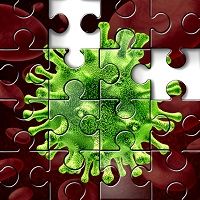Article
Antibiotic Triggers Bacteria to Pass on Resistance
Author(s):
Not only are bacteria becoming more resistant to medication, but they are also passing on that resistance to other cells more efficiently, Rice University researchers found.

Not only are bacteria becoming more resistant to medication, but they are also passing on that resistance to other cells more efficiently, Rice University researchers found.
Lead author Kathryn Beabout and colleagues had a goal in mind: uncover how the bacteria Enterococcus faecalis mutates in the presence of antibiotics. The bacteria, which is found in the gastrointestinal tracts of humans, was treated with tigecycline. The findings revealed a rather alarming wake-up call about antibiotic resistance which may shape future prescribing practices.
“The best you can do is try to manage when you use the antibiotic,” Beabout, a graduate student at Rice, said in a news release. “But our idea is that if we can predict how resistance is going to emerge, we can come up with strategies to use antibiotics in a more intelligent way.”
The team examined how the cells passed on resistance mutations to others, known as horizontal gene transfer, in a report in Molecular Biology and Evolution. Tn916, a mutant DNA, carries the gene tetM which is resistant to tigecycline. Through a process called parasexuality, the cells are able to exchange genetic material. Tn916, found along the genome, is able to transfer their antibiotic resistance about one in 120,000. However, the odds increase to one in 50 when exposed to the antibiotic due to a mutation that leads to an overproduction of tetM.
“The resistance mechanism required the presence of two mutations, to Tn916 and to a gene that encodes the ribosomal S10 protein, both of which could be easily identified through pre- and post-experiment gene sequencing,” the statement said.
The antibiotic is supposed to bind to the cell’s ribosome so that it does not make proteins. However, tetM swoops in and frees the ribosome — a phenomenon that Beabout explained was unexpected.
“So we are seeing both resistance and an increase in the frequency at which resistance is able to transfer from cell to cell and move around genomes. That’s definitely worrisome,” Beabout said.
Although unfavorable, the discovery can help in the development of future drugs to stay ahead of resistance.





